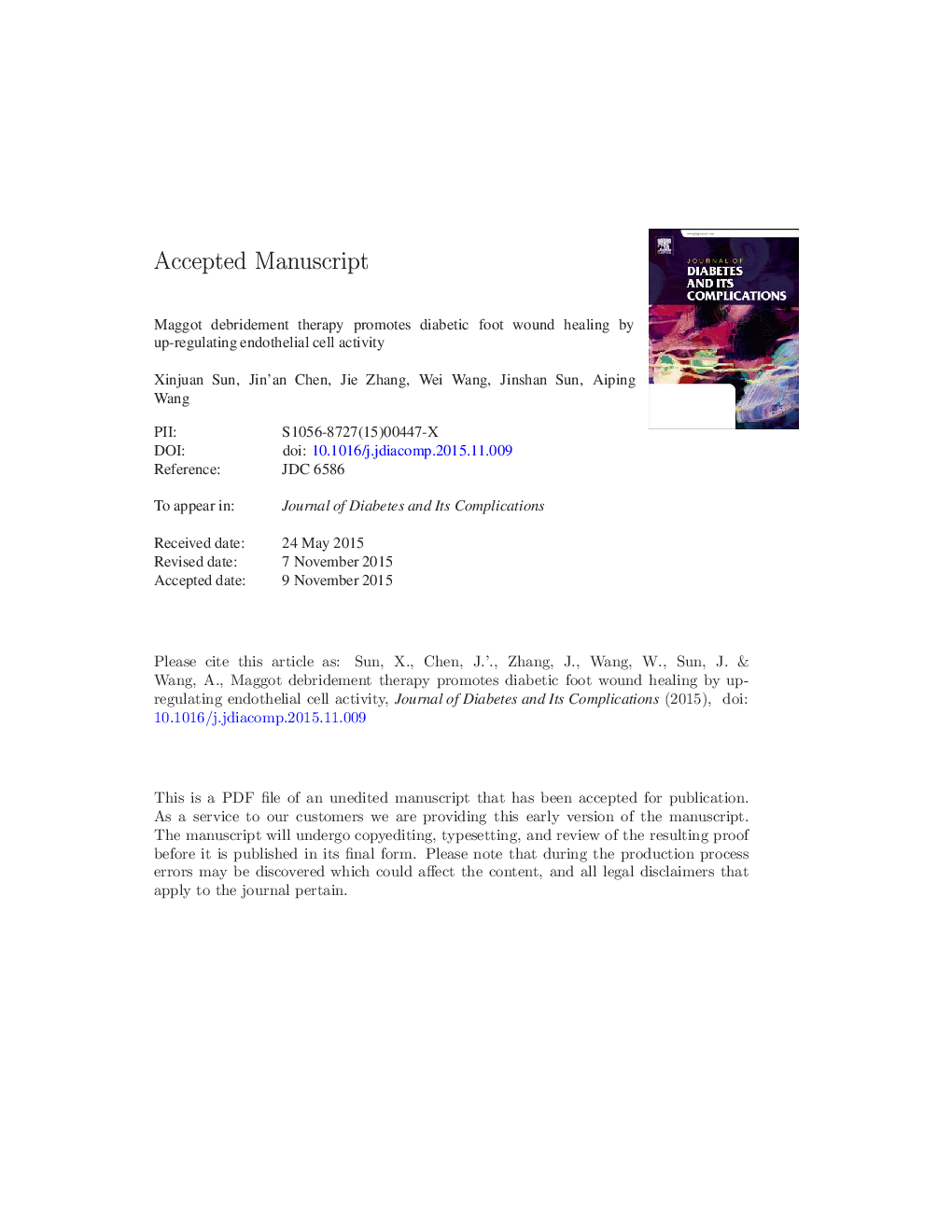| Article ID | Journal | Published Year | Pages | File Type |
|---|---|---|---|---|
| 5902166 | Journal of Diabetes and its Complications | 2016 | 17 Pages |
Abstract
To determine the role of maggot debridement therapy (MDT) on diabetic foot wound healing, we compared growth related factors in wounds before and after treatment. Furthermore, we utilized human umbilical vein endothelial cells (HUVECs) to explore responses to maggot excretions/secretions on markers of angiogenesis and proliferation. The results showed that there was neo-granulation and angiogenesis in diabetic foot wounds after MDT. Moreover, significant elevation in CD34 and CD68 levels was also observed in treated wounds. In vitro, ES increased HUVEC proliferation, improved tube formation, and increased expression of vascular endothelial growth factor receptor 2 in a dose dependent manner. These results demonstrate that MDT and maggot ES can promote diabetic foot wound healing by up-regulating endothelial cell activity.
Related Topics
Life Sciences
Biochemistry, Genetics and Molecular Biology
Endocrinology
Authors
Xinjuan Sun, Jin'an Chen, Jie Zhang, Wei Wang, Jinshan Sun, Aiping Wang,
